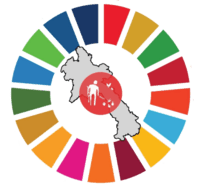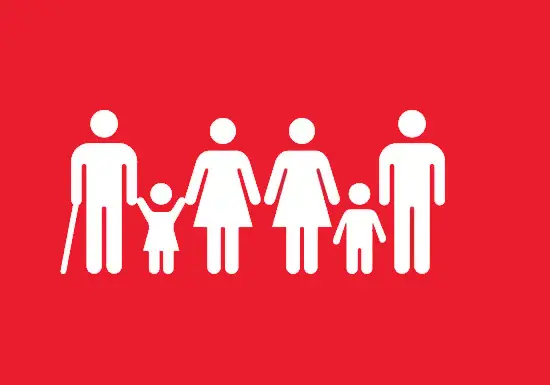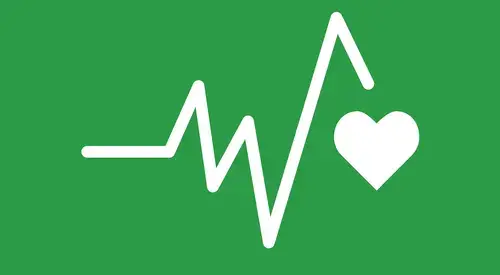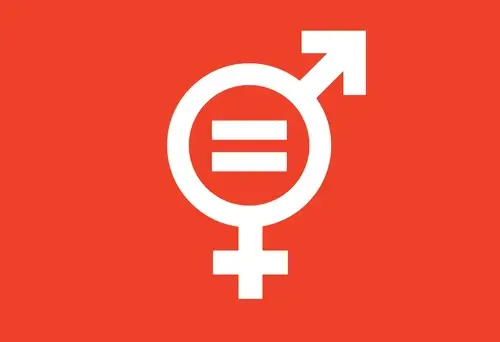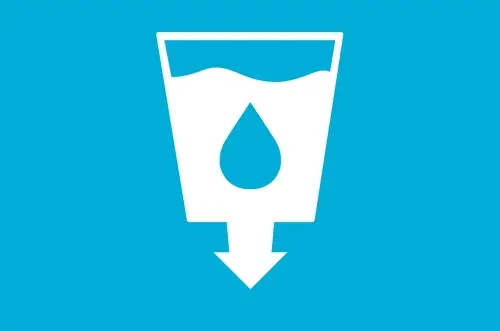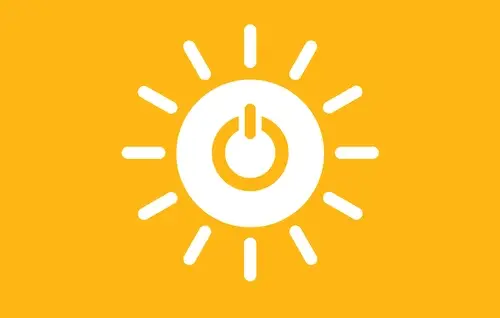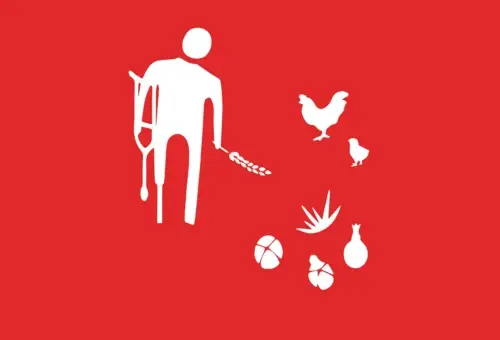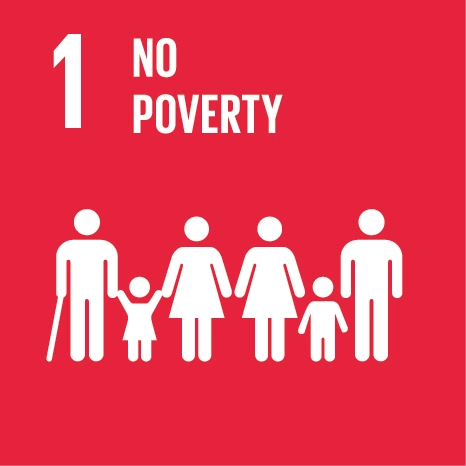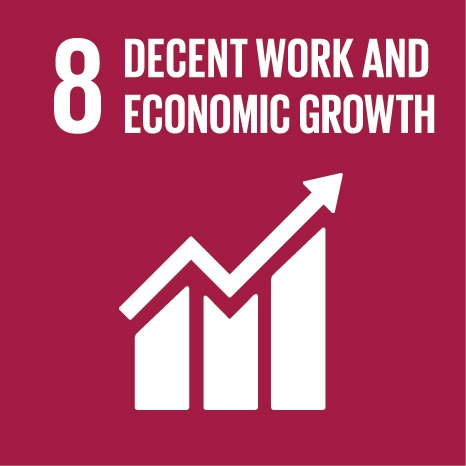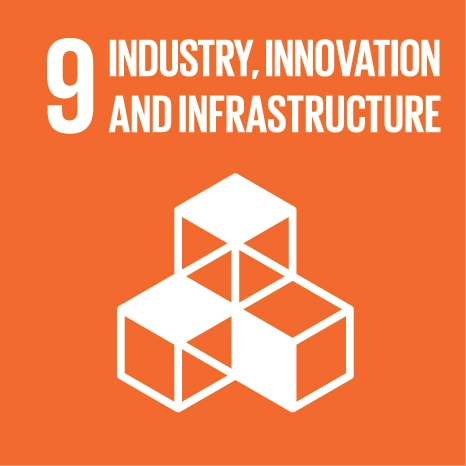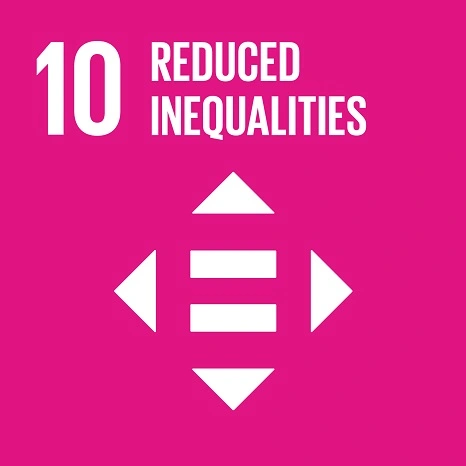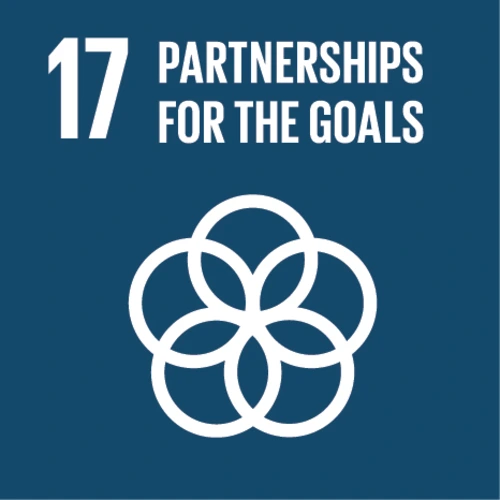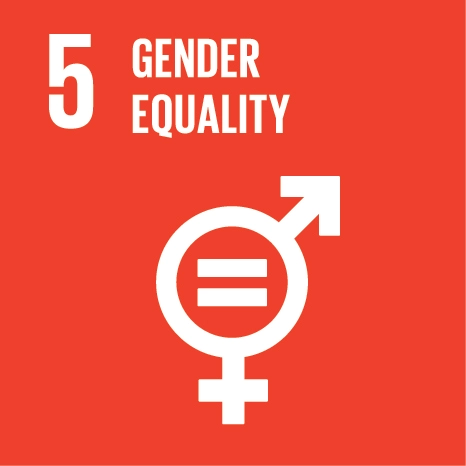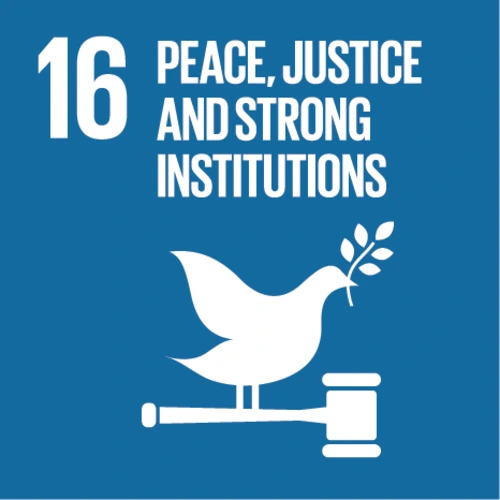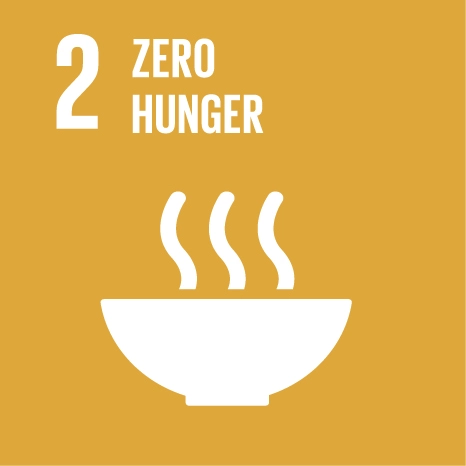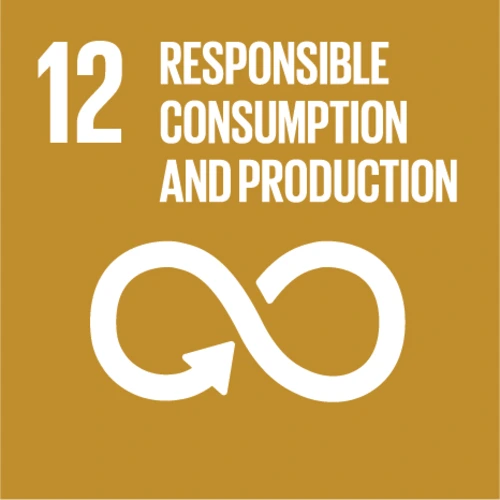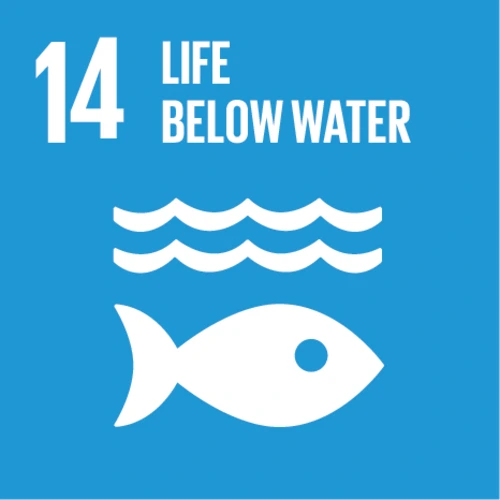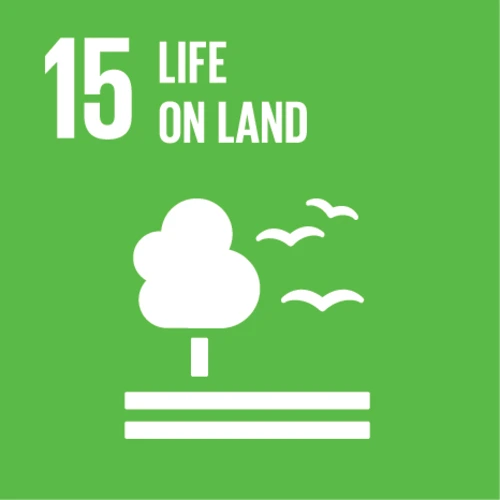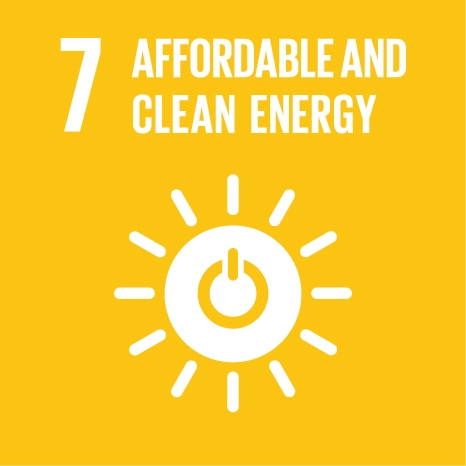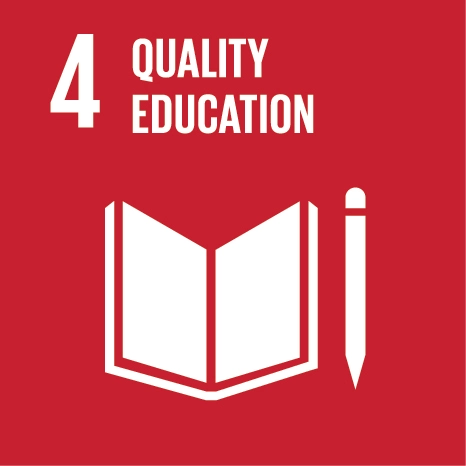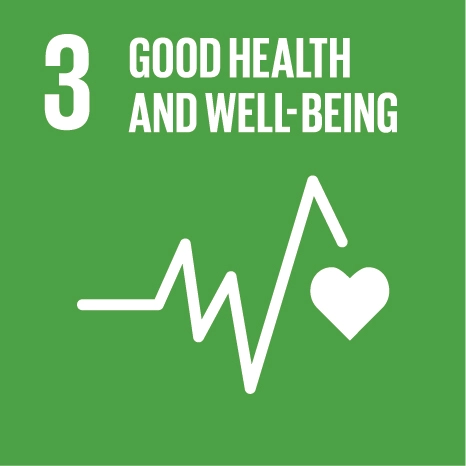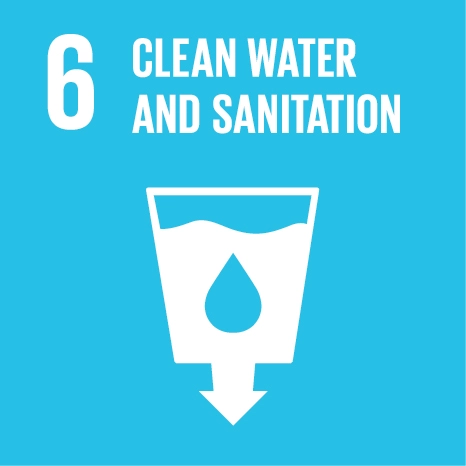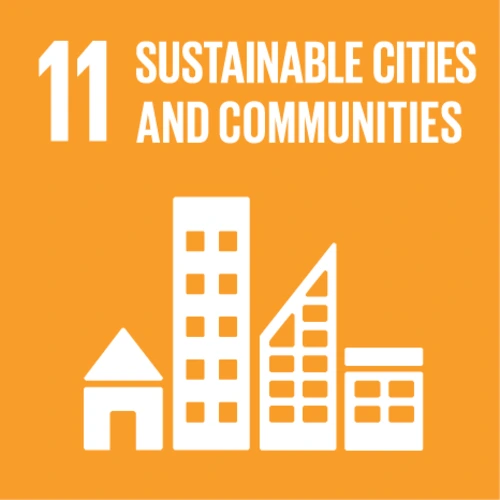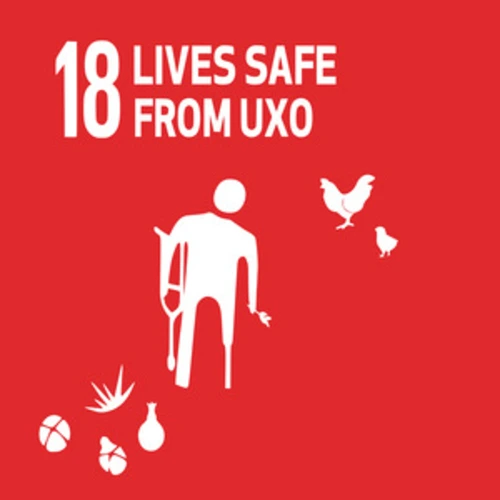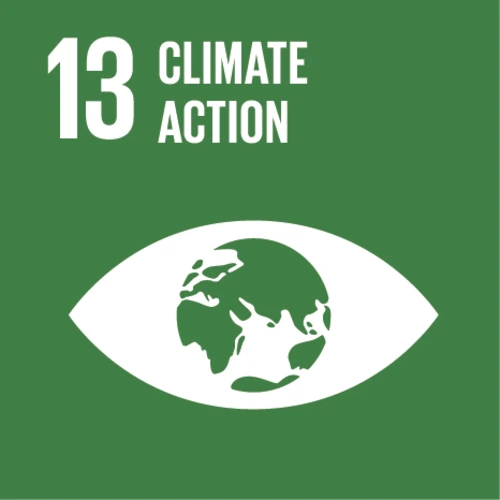Indicators Owner
Click For More Information
Goal 1
1.4.4 Percentage of (a) individuals who have a deposit account at a commercial bank compared to the total population and (b) individuals who have a deposit account at various financial institutions/microfinance institutions of adults (18 years and above) compared to the entire population.
1.4.5 Percentage of (a) the number of villages and (b) the number of districts with:
- Bank branches or service units.
- Microfinance institutions (deposit-taking and non-deposit-taking).
Goal 8
8.10.1 Percentage per 100,000 adults of:
- Number of ATMs.
- Number of commercial bank branches and banking service units.
- Microfinance institutions (deposit-taking and non-deposit-taking).
8.10.2 Percentage of adults (18 years and above) (total/female/male) who:
- Have a deposit book/deposit account at a commercial bank.
- Obtain a loan from a business bank.
- Obtain a loan from a financial institution.
Goal 9
9.3.2 Percentage of small and medium enterprises (SMEs) that borrow money from banks compared to the total number of small and medium enterprises (SMEs).
Goal 10
10.5.1 The number of regulations and laws related to the Bank of Lao PDR that have been revised to align with international standards. Law on Payment System:
- Law on the Bank of the Lao PDR.
- Draft Law on Business Banking.
- Draft Law on Securities.
Goal 17
17.3.2 Value of personal cross-border transfers compared to GDP (US$).
1.4.4 Percentage of (a) individuals who have a deposit account at a commercial bank compared to the total population and (b) individuals who have a deposit account at various financial institutions/microfinance institutions of adults (18 years and above) compared to the entire population.
1.4.5 Percentage of (a) the number of villages and (b) the number of districts with:
- Bank branches or service units.
- Microfinance institutions (deposit-taking and non-deposit-taking).
Goal 8
8.10.1 Percentage per 100,000 adults of:
- Number of ATMs.
- Number of commercial bank branches and banking service units.
- Microfinance institutions (deposit-taking and non-deposit-taking).
8.10.2 Percentage of adults (18 years and above) (total/female/male) who:
- Have a deposit book/deposit account at a commercial bank.
- Obtain a loan from a business bank.
- Obtain a loan from a financial institution.
Goal 9
9.3.2 Percentage of small and medium enterprises (SMEs) that borrow money from banks compared to the total number of small and medium enterprises (SMEs).
Goal 10
10.5.1 The number of regulations and laws related to the Bank of Lao PDR that have been revised to align with international standards. Law on Payment System:
- Law on the Bank of the Lao PDR.
- Draft Law on Business Banking.
- Draft Law on Securities.
Goal 17
17.3.2 Value of personal cross-border transfers compared to GDP (US$).
Click For More Information
Goal 5
5.1.1 There is a legal framework that promotes, implements, and monitors gender equality and non-discrimination between women and girls.
5.1.2 There is a mechanism to implement, enforce, and monitor the implementation of the legal framework in each field of law or not.
5.2.1 The rate of women aged 15-49 who suffered physical and/or sexual violence from their partners in the past 12 months, divided by type of physical violence and age.
5.2.2 Percentage of women and girls aged 15 years and older who have been subjected to physical, sexual, and psychological violence by someone other than their loved ones who access services (health, social, and justice).
5.2.3 Proportion of women aged 15 with partners who were subjected to physical, sexual, and mental violence by someone other than their own husband who accessed services (health, social, and justice).
5.2.4 Proportion of women and girls aged 15 and above who were subjected to physical, sexual, and mental violence who received services and were satisfied with services (health, social, and justice).
5.3.1 Percentage of women aged 20-24 years married or living together before the age of 15 and before the age of 18 compared to the total number of married women.
5.3.3 Percentage of young women under the age of 18 who are pregnant compared to all pregnant women.
5.3.4 Percentage of women aged 15-49 who gave birth before:
- Age 15:
- Age 18
Percentage of women aged between 20-24 who gave birth before:
- Age 15:
- Age 18 compared to the total number of women in that age range.
5.4.1 Percentage of time spent in unpaid work compared to total time (in days):
- Females.
- Males.
5.5.1 Percentage of women who hold positions in the National Assembly compared to all members:
- National level.
- Provincial level.
5.5.2 The percentage of women in positions of leadership/deciding issues (political/economic and social life) compared to the total number of government employees:
- Deputy head of department.
- Department head.
- Deputy Head of Department.
- Head of Department.
- Deputy Minister.
- Minister.
5.5.3 Proportion of women who are (1) village head and (2) village head deputy.
5.6.2 There are laws and regulations in place to ensure women aged 15-49 have access to information, education, and sexual and reproductive health services.
5.6.3 Percentage of women of reproductive age (15-49 years) who need family planning has appropriate family planning compared to all women of reproductive age (15-49 years).
5.a.1 Percent of women have equal rights to own land and use it according to law (including customary law) compared to all women.
5.a.2 Legal framework (including customary law) that guarantees women's right to ownership and/or land management.
5.c.1 The existing system regarding monitoring and allocation (personnel and budget) for equality in society and giving rights and roles to women.
Goal 16
16.1.3 Percentage of the population (13-17 years old) affected by (a) physical and (b) sexual violence:
- Females.
- Males.
16.2.1 Percentage of the number of children (1-17 years) who have been affected by physical violence in recent years compared to the total population between the ages:
- Total.
- Female.
- Male.
16.2.3 Percentage of girls and boys aged 18-24 who were sexually abused starting at age 18 compared to the total population between that age:
- Total.
- Female.
- Male.
16.2.4 Percentage of the number of children affected by the use of psychological force in the past year compared to the total number of children:
- Total.
- Female.
- Male.
5.1.1 There is a legal framework that promotes, implements, and monitors gender equality and non-discrimination between women and girls.
5.1.2 There is a mechanism to implement, enforce, and monitor the implementation of the legal framework in each field of law or not.
5.2.1 The rate of women aged 15-49 who suffered physical and/or sexual violence from their partners in the past 12 months, divided by type of physical violence and age.
5.2.2 Percentage of women and girls aged 15 years and older who have been subjected to physical, sexual, and psychological violence by someone other than their loved ones who access services (health, social, and justice).
5.2.3 Proportion of women aged 15 with partners who were subjected to physical, sexual, and mental violence by someone other than their own husband who accessed services (health, social, and justice).
5.2.4 Proportion of women and girls aged 15 and above who were subjected to physical, sexual, and mental violence who received services and were satisfied with services (health, social, and justice).
5.3.1 Percentage of women aged 20-24 years married or living together before the age of 15 and before the age of 18 compared to the total number of married women.
5.3.3 Percentage of young women under the age of 18 who are pregnant compared to all pregnant women.
5.3.4 Percentage of women aged 15-49 who gave birth before:
- Age 15:
- Age 18
Percentage of women aged between 20-24 who gave birth before:
- Age 15:
- Age 18 compared to the total number of women in that age range.
5.4.1 Percentage of time spent in unpaid work compared to total time (in days):
- Females.
- Males.
5.5.1 Percentage of women who hold positions in the National Assembly compared to all members:
- National level.
- Provincial level.
5.5.2 The percentage of women in positions of leadership/deciding issues (political/economic and social life) compared to the total number of government employees:
- Deputy head of department.
- Department head.
- Deputy Head of Department.
- Head of Department.
- Deputy Minister.
- Minister.
5.5.3 Proportion of women who are (1) village head and (2) village head deputy.
5.6.2 There are laws and regulations in place to ensure women aged 15-49 have access to information, education, and sexual and reproductive health services.
5.6.3 Percentage of women of reproductive age (15-49 years) who need family planning has appropriate family planning compared to all women of reproductive age (15-49 years).
5.a.1 Percent of women have equal rights to own land and use it according to law (including customary law) compared to all women.
5.a.2 Legal framework (including customary law) that guarantees women's right to ownership and/or land management.
5.c.1 The existing system regarding monitoring and allocation (personnel and budget) for equality in society and giving rights and roles to women.
Goal 16
16.1.3 Percentage of the population (13-17 years old) affected by (a) physical and (b) sexual violence:
- Females.
- Males.
16.2.1 Percentage of the number of children (1-17 years) who have been affected by physical violence in recent years compared to the total population between the ages:
- Total.
- Female.
- Male.
16.2.3 Percentage of girls and boys aged 18-24 who were sexually abused starting at age 18 compared to the total population between that age:
- Total.
- Female.
- Male.
16.2.4 Percentage of the number of children affected by the use of psychological force in the past year compared to the total number of children:
- Total.
- Female.
- Male.
Click For More Information
Goal 1
1.1.1 Percentage of citizens living below the international poverty line ($1.90/day).
1.2.1 Percentage of citizens who live below the national poverty line.
1.2.2 Percentage of children who are deprived in several dimensions according to the national definition.
1.2.3 Percentage of families that are still poor according to the survey and determined by the National Committee for Rural Development and Poverty Eradication.
1.4.1 Percentage of the population living in households that have access to basic services:
- Education (primary school).
- Health (pharmacy, home medicine bag, circulating medicine, health center, midwives).
- Clean water.
- Micro-electricity.
- Financial services.
- Roads accessible all year round.
Goal 2
2.1.2 The percentage of the population that cannot guarantee food sufficiency at a severe or moderate level compared to the entire population, based on the calculation of the Food Insecurity Experience Level (FIES).
2.1.4 Food production (tons):
- Rice.
- Sweet corn.
- Vegetables.
- Meat and fish.
2.3.1 Value added in the agricultural sector per unit of labor (proximate indicator to measure the efficiency of agricultural production) in US$.
2.A.1 The proportion of government expenditure in the agricultural sector, which includes crops, animal husbandry, fishing, forest products, and hunting.
2.A.2 The value of all foreign aid (development grants and other aid) in the agricultural sector in US$.
Goal 10
10.2.1 The percentage of the population whose income is less than 50% of the median income.
10.2.2* Percentage of households with income below 50% of the median income.
Goal 12
12.31 Product damaged after harvest.
Goal 14
14.4.1 Number of fish reserves.
14.6.1 Development and implementation of the National Plan of Action (NPOA) to solve the problem of illegal, unreported, and unregulated fishing, which is consistent with the International Plan of Action to Prevent, Deter, and Eliminate such problems (IPOA-IUU).
14.B.1.A Tools or existing mechanisms that address the problems of small-scale fisheries (SSF).
14.B.1.B Specific initiatives to implement the SSF recommendations continuously.
14.B.1.C Existing management mechanisms that help small-scale fishermen and fish workers participate in the decision-making process.
Goal 15
15.1.1 Forest area (percentage of total area).
15.1.2 Percentage of land covered by national forest, provincial and district forest.
15.2.1.a Certified production forest area (hectares) (example: FSC, FLEGT).
15.2.1.b Forest area with management plan (million hectares).
15.3.1 Percentage of rural villages with degraded land compared to the total number of rural villages, divided by the level of land degradation:
- Soft.
- Moderate.
- Serious.
15.4.1 Proportion of forest reserves compared to the total land area.
15.5.1 Number of biodiversity and endangered species.
15.7.1 Proportion of illegal wildlife trade (all wildlife seized and sold, based on export permit).
15.8.1 Adoption of national legislation on the prevention and control of the entry of wild animals from other places.
15.9.1 Progress in the implementation of the national target in biodiversity management, based on the report of the national socio-economic development plan.
15.B.2.b Government budget used for forest development.
15.C.1 Number of illegally traded wild animals.
1.1.1 Percentage of citizens living below the international poverty line ($1.90/day).
1.2.1 Percentage of citizens who live below the national poverty line.
1.2.2 Percentage of children who are deprived in several dimensions according to the national definition.
1.2.3 Percentage of families that are still poor according to the survey and determined by the National Committee for Rural Development and Poverty Eradication.
1.4.1 Percentage of the population living in households that have access to basic services:
- Education (primary school).
- Health (pharmacy, home medicine bag, circulating medicine, health center, midwives).
- Clean water.
- Micro-electricity.
- Financial services.
- Roads accessible all year round.
Goal 2
2.1.2 The percentage of the population that cannot guarantee food sufficiency at a severe or moderate level compared to the entire population, based on the calculation of the Food Insecurity Experience Level (FIES).
2.1.4 Food production (tons):
- Rice.
- Sweet corn.
- Vegetables.
- Meat and fish.
2.3.1 Value added in the agricultural sector per unit of labor (proximate indicator to measure the efficiency of agricultural production) in US$.
2.A.1 The proportion of government expenditure in the agricultural sector, which includes crops, animal husbandry, fishing, forest products, and hunting.
2.A.2 The value of all foreign aid (development grants and other aid) in the agricultural sector in US$.
Goal 10
10.2.1 The percentage of the population whose income is less than 50% of the median income.
10.2.2* Percentage of households with income below 50% of the median income.
Goal 12
12.31 Product damaged after harvest.
Goal 14
14.4.1 Number of fish reserves.
14.6.1 Development and implementation of the National Plan of Action (NPOA) to solve the problem of illegal, unreported, and unregulated fishing, which is consistent with the International Plan of Action to Prevent, Deter, and Eliminate such problems (IPOA-IUU).
14.B.1.A Tools or existing mechanisms that address the problems of small-scale fisheries (SSF).
14.B.1.B Specific initiatives to implement the SSF recommendations continuously.
14.B.1.C Existing management mechanisms that help small-scale fishermen and fish workers participate in the decision-making process.
Goal 15
15.1.1 Forest area (percentage of total area).
15.1.2 Percentage of land covered by national forest, provincial and district forest.
15.2.1.a Certified production forest area (hectares) (example: FSC, FLEGT).
15.2.1.b Forest area with management plan (million hectares).
15.3.1 Percentage of rural villages with degraded land compared to the total number of rural villages, divided by the level of land degradation:
- Soft.
- Moderate.
- Serious.
15.4.1 Proportion of forest reserves compared to the total land area.
15.5.1 Number of biodiversity and endangered species.
15.7.1 Proportion of illegal wildlife trade (all wildlife seized and sold, based on export permit).
15.8.1 Adoption of national legislation on the prevention and control of the entry of wild animals from other places.
15.9.1 Progress in the implementation of the national target in biodiversity management, based on the report of the national socio-economic development plan.
15.B.2.b Government budget used for forest development.
15.C.1 Number of illegally traded wild animals.
Click For More Information
Goal 7
7.1.1 Percentage of households that have access to electricity in all forms compared to the total number of households:
- Rural areas.
- Urban areas.
7.1.2 Percentage of households that rely on fuel and clean technology as the main means of living compared to the total number of households.
7.1.3 Percentage of households that have used electricity from the national grid compared to the total number of households:
- Total amount.
- Rural areas without roads.
- Rural areas with roads.
- Urban areas.
7.2.1 Percentage of total renewable energy compared to total energy consumption.
7.3.1 Primary energy intensity (ratio between energy supply and gross domestic product) (MJ/US$ 2005 PPP).
7.B.1 Investment in the efficient energy sector compared to GDP and the amount of foreign investment in infrastructure and technology through money transfers.
7.1.1 Percentage of households that have access to electricity in all forms compared to the total number of households:
- Rural areas.
- Urban areas.
7.1.2 Percentage of households that rely on fuel and clean technology as the main means of living compared to the total number of households.
7.1.3 Percentage of households that have used electricity from the national grid compared to the total number of households:
- Total amount.
- Rural areas without roads.
- Rural areas with roads.
- Urban areas.
7.2.1 Percentage of total renewable energy compared to total energy consumption.
7.3.1 Primary energy intensity (ratio between energy supply and gross domestic product) (MJ/US$ 2005 PPP).
7.B.1 Investment in the efficient energy sector compared to GDP and the amount of foreign investment in infrastructure and technology through money transfers.
Click For More Information
Goal 4
4.1.1 The percentage of students achieving minimum proficiency levels in reading and mathematics at: (i) early primary school (grade 2 or 3), (ii) the end of primary school (grade 5), and (iii) the end of lower secondary school (grade 4), disaggregated by gender, ethnic group, disability, and province based on available data.
4.1.2* National-level management of student learning outcomes at: (i) early primary school (grade 2 or 3), (ii) the end of primary school (grade 5), and (iii) the end of lower secondary school (grade 4).
4.1.3* New total enrollment rate in the final year of primary and early secondary education.
4.1.4* Completion rates for primary education, lower secondary education, and upper secondary education, disaggregated by gender (percentage of graduation).
4.1.5* Rate of out-of-school children (primary, lower secondary, and upper secondary education) disaggregated by gender.
4.1.6* Percentage of students overage for their grade (primary, lower secondary education).
4.2.2 Participation rate of children (one year before the primary school entry age) disaggregated by gender.
4.2.3* Total enrollment rate in: (l) pre-primary preparation classes, and (b) pre-primary education classes, categorized as:
- Nursery classes (3 months to under 3 years old).
- Kindergarten classes (3 years to under 6 years old).
In kindergarten, there is also a learning group through play and pre-primary classes (age 5) disaggregated by gender.
4.3.1 Participation rate of youth (ages 15-24) and adults (ages 25-64) in formal and non-formal education or training over the past 12 months, disaggregated by gender.
4.3.2* Total enrollment rate in higher education by gender (entry age 18-22).
4.3.3* Participation rate in vocational education (ages 15-24) disaggregated by gender.
4.3.4* Percentage of students completing lower or upper secondary education who proceed to vocational education, disaggregated by gender:
- Percentage of lower secondary graduates continuing.
- Percentage of upper secondary graduates continuing.
4.5.1.a Gender equality index in school enrollment:
- Primary school.
- Lower secondary school.
- Upper secondary school.
4.6.1.a Percentage of adults (age 15+) who can read and write, disaggregated by gender (the number of literates compared to the total population), by gender.
4.6.1.b Percentage of youth (ages 15-24) who can read and write:
- 15-19 years.
- 20-24 years.
4.7.2* Percentage of universities and vocational and teacher training institutions with sustainable structures and operations.
4.A.1 Percentage of schools:
- (A) With access to electricity.
- (B) Using the internet for teaching and learning.
- (C) With computers for teaching and learning.
- (D) Having adequate sanitation facilities (toilets) separated by gender and access to clean water.
- (E) With hand-washing facilities meeting national standards.
- (F) With infrastructure and equipment suitable for students with disabilities.
- (G) With facilities meeting national standards for water and sanitation (WASH) relative to the total number of schools.
4.B.1 Amount of official development assistance in the form of scholarships by sector and subject.
4.C.1 Percentage of teachers with formal training, disaggregated by gender:
- Primary school.
- Lower secondary school.
- Upper secondary school.
Goal 12
12.8.1 Development of primary and secondary education curricula linked to sustainable development and consistent with primary and secondary teacher training curricula.
4.1.1 The percentage of students achieving minimum proficiency levels in reading and mathematics at: (i) early primary school (grade 2 or 3), (ii) the end of primary school (grade 5), and (iii) the end of lower secondary school (grade 4), disaggregated by gender, ethnic group, disability, and province based on available data.
4.1.2* National-level management of student learning outcomes at: (i) early primary school (grade 2 or 3), (ii) the end of primary school (grade 5), and (iii) the end of lower secondary school (grade 4).
4.1.3* New total enrollment rate in the final year of primary and early secondary education.
4.1.4* Completion rates for primary education, lower secondary education, and upper secondary education, disaggregated by gender (percentage of graduation).
4.1.5* Rate of out-of-school children (primary, lower secondary, and upper secondary education) disaggregated by gender.
4.1.6* Percentage of students overage for their grade (primary, lower secondary education).
4.2.2 Participation rate of children (one year before the primary school entry age) disaggregated by gender.
4.2.3* Total enrollment rate in: (l) pre-primary preparation classes, and (b) pre-primary education classes, categorized as:
- Nursery classes (3 months to under 3 years old).
- Kindergarten classes (3 years to under 6 years old).
In kindergarten, there is also a learning group through play and pre-primary classes (age 5) disaggregated by gender.
4.3.1 Participation rate of youth (ages 15-24) and adults (ages 25-64) in formal and non-formal education or training over the past 12 months, disaggregated by gender.
4.3.2* Total enrollment rate in higher education by gender (entry age 18-22).
4.3.3* Participation rate in vocational education (ages 15-24) disaggregated by gender.
4.3.4* Percentage of students completing lower or upper secondary education who proceed to vocational education, disaggregated by gender:
- Percentage of lower secondary graduates continuing.
- Percentage of upper secondary graduates continuing.
4.5.1.a Gender equality index in school enrollment:
- Primary school.
- Lower secondary school.
- Upper secondary school.
4.6.1.a Percentage of adults (age 15+) who can read and write, disaggregated by gender (the number of literates compared to the total population), by gender.
4.6.1.b Percentage of youth (ages 15-24) who can read and write:
- 15-19 years.
- 20-24 years.
4.7.2* Percentage of universities and vocational and teacher training institutions with sustainable structures and operations.
4.A.1 Percentage of schools:
- (A) With access to electricity.
- (B) Using the internet for teaching and learning.
- (C) With computers for teaching and learning.
- (D) Having adequate sanitation facilities (toilets) separated by gender and access to clean water.
- (E) With hand-washing facilities meeting national standards.
- (F) With infrastructure and equipment suitable for students with disabilities.
- (G) With facilities meeting national standards for water and sanitation (WASH) relative to the total number of schools.
4.B.1 Amount of official development assistance in the form of scholarships by sector and subject.
4.C.1 Percentage of teachers with formal training, disaggregated by gender:
- Primary school.
- Lower secondary school.
- Upper secondary school.
Goal 12
12.8.1 Development of primary and secondary education curricula linked to sustainable development and consistent with primary and secondary teacher training curricula.
Click For More Information
Goal 1
1.A.2.A Government budget allocation: - (a) In health work, - (b) In education work, presented as: - A percentage compared to the total government budget allocation. - A percentage compared to the gross domestic product (GDP).
Goal 10
10.A.1 Proportion of goods imported into Lao PDR without import duty compared to all imported goods.
Goal 16
16.6.1 The actual state budget compared to the approved state budget, divided by sector.
16.6.3* The number of days after the end of the fiscal year that the annual budget report can be disclosed to the public.
16.6.4* The number of months after the end of the fiscal year budget plan that the budget audit report is published for public awareness.
16.6.5* The number of months from the fiscal year-end account closure to the release of the financial audit report to the public.
Goal 17
17.1.1 Total government revenue (disaggregated by source) compared to GDP (domestic revenue/grants/loans).
17.1.2 Percentage of expenses that are used for domestic income.
17.4.1 Total debt payment value compared to the value of exports of goods, services, and primary income.
1.A.2.A Government budget allocation: - (a) In health work, - (b) In education work, presented as: - A percentage compared to the total government budget allocation. - A percentage compared to the gross domestic product (GDP).
Goal 10
10.A.1 Proportion of goods imported into Lao PDR without import duty compared to all imported goods.
Goal 16
16.6.1 The actual state budget compared to the approved state budget, divided by sector.
16.6.3* The number of days after the end of the fiscal year that the annual budget report can be disclosed to the public.
16.6.4* The number of months after the end of the fiscal year budget plan that the budget audit report is published for public awareness.
16.6.5* The number of months from the fiscal year-end account closure to the release of the financial audit report to the public.
Goal 17
17.1.1 Total government revenue (disaggregated by source) compared to GDP (domestic revenue/grants/loans).
17.1.2 Percentage of expenses that are used for domestic income.
17.4.1 Total debt payment value compared to the value of exports of goods, services, and primary income.
Click For More Information
Goal 16
16.8.1 Percentage of the number of members and those entitled to vote in Lao PDR in international organizations compared to the total number of those entitled to vote.
16.A.1 Existing national human rights institutions that are consistent with the Paris Agreement/Principles.
Goal 17
17.16.1 The Lao PDR obligates to report the progress of the multi-sector development effectiveness monitoring framework as a framework to support the success of sustainable development.
16.8.1 Percentage of the number of members and those entitled to vote in Lao PDR in international organizations compared to the total number of those entitled to vote.
16.A.1 Existing national human rights institutions that are consistent with the Paris Agreement/Principles.
Goal 17
17.16.1 The Lao PDR obligates to report the progress of the multi-sector development effectiveness monitoring framework as a framework to support the success of sustainable development.
Click For More Information
Goal 2
2.1.1 Percentage of the population that lacks nutrition compared to the total population.
2.1.3* The percentage of the population consuming nutrients below the minimum energy requirement of the body of 2100 calories per day per person (nutrient poverty line set by the government).
2.2.1 Percentage of children under 5 years of age who are chronically malnourished compared to all children under 5 years of age (height below the median value determined by the World Health Organization regarding the standard of child growth by the standard value difference <-2 according to each age limit).
2.2.1.a* Percentage of children under 2 years of age who are chronically malnourished compared to all children under 2 years of age.
2.2.3* Percentage of children under 5 years of age who are below the standard for each age group compared to all children under 5 years of age (weight according to each height level is lower than the average value determined by the World Health Organization regarding the standard of child growth with a standard deviation >+2 according to each age group) by sex, province, and ethnicity.
2.2.4* The percentage of children under 5 years of age with weight exceeding the standard according to each age threshold compared to all children under 5 years of age (weight according to each height level is lower than the middle value determined by the World Health Organization regarding the standard of child growth with a standard deviation >+2 according to each age threshold) by gender, province, and ethnic group.
Goal 3
3.1.1 Maternal mortality rate (per 100,000 live births).
3.1.2 Proportion of births assisted by doctors who specialize in childbirth.
3.2.1 Death rate of children under 5 years old (per 100,000 live births).
3.2.2 Neonatal mortality rate (age 28 days and above; per 100,000 live births).
3.2.3* Neonatal mortality rate (per 1,000 live births).
3.3.1 Estimated rate of new HIV infections per 1,000 people by sex, age, and main population group.
3.3.1.a Percentage of the population diagnosed with HIV receiving ART treatment.
3.3.3 Malaria infection rate per 1,000 people in Lao PDR and the population in areas where malaria is prevalent.
3.3.4 Percentage of children who received 3 doses of hepatitis B vaccine.
3.3.5 The number of people who need help from the outbreak of tropical diseases (NTDs) according to the WHO NTD Roadmap and the World Health Guidelines Council, which has been reported to the World Health Organization.
3.4.1 Death rate from heart disease, cancer, obesity, or chronic respiratory disease between the ages of 30 and 70 compared to the entire population.
3.5.2 Harmful effects of alcohol consumption per person (15 years old and above) in one year in units of pure alcoholic drinks.
3.7.2 Birth rate of adolescent women (10-14 years old, 15-19 years old) per 1,000 women of the age group:
- 10-14 years old.
- 15-19 years old.
3.8.1.A Scope of necessary health services: Prevention:
- Percentage of those who have been to antenatal care (at least 4 visits to the doctor) for all newborns.
3.8.1.B Scope of necessary health services: Prevention:
- Percentage of children aged 9-12 months who are infected with measles.
- All children aged 9-12 months.
3.8.1.C Extent of essential health services: Treatment:
- Percentage of tuberculosis cases detected by DOTS.
- Percentage of TB cases treated by DOTS.
3.8.2.a Percentage of self-expenditure in terms of health of the population compared to total health expenditure.
3.8.2 Out-of-pocket health expenditure of the population per capita (US$) Number of deaths per year caused by unsafe water consumption, unsafe sanitation, and lack of hygiene (diarrhea only).
3.9.3 The rate of death from accidental injury compared to all deaths.
3.A.1 Percentage of current smokers aged 15 and over compared to the total number of smokers:
- Total number.
- Female.
- Male.
3.B.2 Amount of grants for development in the basic health sector.
3.B.1 Percentage of the number of health facilities that have essential medicines according to the list of essential medicines of the Ministry of Health.
3.B.4* The ratio of the amount of development grants for health work to the total expenditure on health work.
3.C.1 Ratio of the number of medical staff per 1,000 people by:
- Town.
- The countryside.
- Doctor.
- Nurse.
- Midwife.
3.D.1 The Lao PDR has adopted the requirements of global health, capacity, and preparedness for health emergencies: approved or not approved?.
Goal 6
6.1.1.a The proportion of the population using clean drinking water compared to the total population.
6.2.1 Proportion of the population using improved toilets compared to the total population.
- Total amount.
- Rural areas.
- Urban areas.
6.2.2* Proportion of the population that still practices open defecation compared to the total population:
- Total.
- Rural areas.
- Urban areas.
6.3.1.a Percentage of the population that uses clean water that does not contain organic compounds compared to the entire population.
2.1.1 Percentage of the population that lacks nutrition compared to the total population.
2.1.3* The percentage of the population consuming nutrients below the minimum energy requirement of the body of 2100 calories per day per person (nutrient poverty line set by the government).
2.2.1 Percentage of children under 5 years of age who are chronically malnourished compared to all children under 5 years of age (height below the median value determined by the World Health Organization regarding the standard of child growth by the standard value difference <-2 according to each age limit).
2.2.1.a* Percentage of children under 2 years of age who are chronically malnourished compared to all children under 2 years of age.
2.2.3* Percentage of children under 5 years of age who are below the standard for each age group compared to all children under 5 years of age (weight according to each height level is lower than the average value determined by the World Health Organization regarding the standard of child growth with a standard deviation >+2 according to each age group) by sex, province, and ethnicity.
2.2.4* The percentage of children under 5 years of age with weight exceeding the standard according to each age threshold compared to all children under 5 years of age (weight according to each height level is lower than the middle value determined by the World Health Organization regarding the standard of child growth with a standard deviation >+2 according to each age threshold) by gender, province, and ethnic group.
Goal 3
3.1.1 Maternal mortality rate (per 100,000 live births).
3.1.2 Proportion of births assisted by doctors who specialize in childbirth.
3.2.1 Death rate of children under 5 years old (per 100,000 live births).
3.2.2 Neonatal mortality rate (age 28 days and above; per 100,000 live births).
3.2.3* Neonatal mortality rate (per 1,000 live births).
3.3.1 Estimated rate of new HIV infections per 1,000 people by sex, age, and main population group.
3.3.1.a Percentage of the population diagnosed with HIV receiving ART treatment.
3.3.3 Malaria infection rate per 1,000 people in Lao PDR and the population in areas where malaria is prevalent.
3.3.4 Percentage of children who received 3 doses of hepatitis B vaccine.
3.3.5 The number of people who need help from the outbreak of tropical diseases (NTDs) according to the WHO NTD Roadmap and the World Health Guidelines Council, which has been reported to the World Health Organization.
3.4.1 Death rate from heart disease, cancer, obesity, or chronic respiratory disease between the ages of 30 and 70 compared to the entire population.
3.5.2 Harmful effects of alcohol consumption per person (15 years old and above) in one year in units of pure alcoholic drinks.
3.7.2 Birth rate of adolescent women (10-14 years old, 15-19 years old) per 1,000 women of the age group:
- 10-14 years old.
- 15-19 years old.
3.8.1.A Scope of necessary health services: Prevention:
- Percentage of those who have been to antenatal care (at least 4 visits to the doctor) for all newborns.
3.8.1.B Scope of necessary health services: Prevention:
- Percentage of children aged 9-12 months who are infected with measles.
- All children aged 9-12 months.
3.8.1.C Extent of essential health services: Treatment:
- Percentage of tuberculosis cases detected by DOTS.
- Percentage of TB cases treated by DOTS.
3.8.2.a Percentage of self-expenditure in terms of health of the population compared to total health expenditure.
3.8.2 Out-of-pocket health expenditure of the population per capita (US$) Number of deaths per year caused by unsafe water consumption, unsafe sanitation, and lack of hygiene (diarrhea only).
3.9.3 The rate of death from accidental injury compared to all deaths.
3.A.1 Percentage of current smokers aged 15 and over compared to the total number of smokers:
- Total number.
- Female.
- Male.
3.B.2 Amount of grants for development in the basic health sector.
3.B.1 Percentage of the number of health facilities that have essential medicines according to the list of essential medicines of the Ministry of Health.
3.B.4* The ratio of the amount of development grants for health work to the total expenditure on health work.
3.C.1 Ratio of the number of medical staff per 1,000 people by:
- Town.
- The countryside.
- Doctor.
- Nurse.
- Midwife.
3.D.1 The Lao PDR has adopted the requirements of global health, capacity, and preparedness for health emergencies: approved or not approved?.
Goal 6
6.1.1.a The proportion of the population using clean drinking water compared to the total population.
6.2.1 Proportion of the population using improved toilets compared to the total population.
- Total amount.
- Rural areas.
- Urban areas.
6.2.2* Proportion of the population that still practices open defecation compared to the total population:
- Total.
- Rural areas.
- Urban areas.
6.3.1.a Percentage of the population that uses clean water that does not contain organic compounds compared to the entire population.
Click For More Information
Goal 10
10.7.2.B The number of policies on internal migration implemented by the Lao PDR.
Goal 16
16.6.2 The monitoring-inspection framework implemented in the target district by collecting and using the opinions of the people about the state services.
16.7.1 Percentage of the number of civil servants who are female compared to the total number of civil servants.
16.7.3* The number of civil servants divided by ethnic groups.
16.9.1 Percentage of the number of children under 5 years of age registered with the authorities compared to the total number of children:
- Total number.
- Female.
- Male.
Goal 17
17.19.2.B Number of birth registrations:
- Total number.
- Female.
- Male.
17.19.3* Number of death registrations:
- Total number.
- Female.
- Male.
10.7.2.B The number of policies on internal migration implemented by the Lao PDR.
Goal 16
16.6.2 The monitoring-inspection framework implemented in the target district by collecting and using the opinions of the people about the state services.
16.7.1 Percentage of the number of civil servants who are female compared to the total number of civil servants.
16.7.3* The number of civil servants divided by ethnic groups.
16.9.1 Percentage of the number of children under 5 years of age registered with the authorities compared to the total number of children:
- Total number.
- Female.
- Male.
Goal 17
17.19.2.B Number of birth registrations:
- Total number.
- Female.
- Male.
17.19.3* Number of death registrations:
- Total number.
- Female.
- Male.
Click For More Information
Goal 2
2.C.1 List of available food prices.
Goal 8
8.3.2* Percentage of loans issued to small and medium enterprises (SMEs) compared to all loans issued.
8.3.3* The number of small and medium enterprises (SMEs) owned by Lao people (Lao people are the main shareholders).
8.5.3* Percentage of businesses owned by women compared to the total number of business owners.
8.A.1 The average number of days used in the import process.
Goal 9
9.2.1 Rate of added value in the processing industry per GDP and per capita.
9.2.2 The ratio of employment in processing to total employment in the processing industry sector.
9.2.3* The growth rate of the number of newly registered companies.
9.3.1 Percentage of the added value of small and medium enterprises (SMEs) to the added value of the entire industry.
Goal 17
17.11.1 Growth rate of exports (average).
2.C.1 List of available food prices.
Goal 8
8.3.2* Percentage of loans issued to small and medium enterprises (SMEs) compared to all loans issued.
8.3.3* The number of small and medium enterprises (SMEs) owned by Lao people (Lao people are the main shareholders).
8.5.3* Percentage of businesses owned by women compared to the total number of business owners.
8.A.1 The average number of days used in the import process.
Goal 9
9.2.1 Rate of added value in the processing industry per GDP and per capita.
9.2.2 The ratio of employment in processing to total employment in the processing industry sector.
9.2.3* The growth rate of the number of newly registered companies.
9.3.1 Percentage of the added value of small and medium enterprises (SMEs) to the added value of the entire industry.
Goal 17
17.11.1 Growth rate of exports (average).
Click For More Information
Goal 8
8.9.1 Income from the tourism sector.
8.9.2 The ratio of the number of workers employed in the tourism sector to the total number of employed workers and the rate of increase in the number of workers:
- Female.
- Male.
8.9.3* Creation of tourism standards of Lao PDR (to be endorsed and implemented):
- Lao PDR's Clean Tourism City Standard.
- Lao PDR's Tourist Place Ranking Standard.
- Lao PDR's People's Boat Hotel Standard.
- Lao People's Participation Tourism Standard.
Goal 11
11.4.2* The number of natural, historical, and national tourist attractions.
11.4.3* The number of natural, historical, and national tourist sites.
11.4.4* The number of world heritage sites recognized by UNESCO.
Goal 12
12.C.1.A The operational plan of Lao PDR in the Pakse Declaration on the strategic approach to sustainable tourism development and connectivity:
- Endorsed.
- Implemented.
12.C.1.B Creation of a sustainable tourism development assessment manual for Lao PDR:
- Endorsed.
- Implemented.
12.C.2* Dissemination and raising awareness among relevant sectors in the tourism sector to use energy efficiently, reduce plastic usage, and promote recycling.
8.9.1 Income from the tourism sector.
8.9.2 The ratio of the number of workers employed in the tourism sector to the total number of employed workers and the rate of increase in the number of workers:
- Female.
- Male.
8.9.3* Creation of tourism standards of Lao PDR (to be endorsed and implemented):
- Lao PDR's Clean Tourism City Standard.
- Lao PDR's Tourist Place Ranking Standard.
- Lao PDR's People's Boat Hotel Standard.
- Lao People's Participation Tourism Standard.
Goal 11
11.4.2* The number of natural, historical, and national tourist attractions.
11.4.3* The number of natural, historical, and national tourist sites.
11.4.4* The number of world heritage sites recognized by UNESCO.
Goal 12
12.C.1.A The operational plan of Lao PDR in the Pakse Declaration on the strategic approach to sustainable tourism development and connectivity:
- Endorsed.
- Implemented.
12.C.1.B Creation of a sustainable tourism development assessment manual for Lao PDR:
- Endorsed.
- Implemented.
12.C.2* Dissemination and raising awareness among relevant sectors in the tourism sector to use energy efficiently, reduce plastic usage, and promote recycling.
Click For More Information
Goal 16
16.3.3* The percentage of cases (divided by gender) enforced and monitored by the Ministry of Justice compared to the total number of cases reported by the court.
16.3.4* The number of people who use legal services through the legal aid office nationwide.
16.3.5* The number of disputes addressed through the village dispute mediation board nationwide.
16.3.3* The percentage of cases (divided by gender) enforced and monitored by the Ministry of Justice compared to the total number of cases reported by the court.
16.3.4* The number of people who use legal services through the legal aid office nationwide.
16.3.5* The number of disputes addressed through the village dispute mediation board nationwide.
Click For More Information
Goal 1
1.3.1 Percentage of the population covered by the State Social Security Organization:
- State enterprises on social security.
- State organizations on social security work.
- Association for Health and Poverty Insurance.
1.5.1. Percentage per 100,000 adults directly affected (death, disappearance, homeless, displacement) by natural disasters.
1.A.2.B Government budget in social security work:
- as a percentage of the total government budget.
- as a percentage of the gross domestic product (GDP).
Goal 8
8.3.1 Percentage of workers engaged in private business or family work compared to the total workforce, divided by gender.
8.5.1 Average hourly earnings of female/male employees, broken down by sector, age group, and disability.
8.5.2 Unemployment rate (percentage of total workforce):
- Total.
- Female.
- Male.
8.5.4* Percentage of employees or workers outside the system compared to the total workforce:
- Total.
- Female.
- Male.
8.6.1 Percentage of youth (aged 15-24) not in education, employment, or training (NEET) compared to the total youth population in that age range.
8.7.1 Percentage of children (aged 5-17) engaged in work ('Idle Children') compared to the total number of children in that age range:
- Total.
- Female.
- Male.
8.7.2* Number of children (aged 5-17) working in hazardous conditions, by gender and age.
8.8.1 Number of workplace injuries and fatalities in the given year.
Goal 10
10.4.2* Social security costs for workers compared to GDP (%) (Unemployment insurance in the social security system).
10.7.1 Expenditure rate per employee due to labor migration compared to the income earned in the destination country. Service fees paid by workers as a percentage of annual income in the destination country.
Goal 18
18.1.1 Number of injured and dead due to explosions, categorized by age group and gender.
18.1.2 Percentage of the population in villages affected by residual explosives, categorized by age, gender, and disability, compared to the total population.
18.2.1 Percentage of high residual explosive areas requiring clearance compared to total land area, categorized by poor villages.
18.2.2 Number of poor villages identified as having high residual explosives that have been cleared.
18.3.1 Proportion of LTTE survivors in earning age unable to generate sufficient basic income.
18.3.2 Percentage of LTTE survivors and victims integrated into health, education, and employment systems compared to total survivors.
1.3.1 Percentage of the population covered by the State Social Security Organization:
- State enterprises on social security.
- State organizations on social security work.
- Association for Health and Poverty Insurance.
1.5.1. Percentage per 100,000 adults directly affected (death, disappearance, homeless, displacement) by natural disasters.
1.A.2.B Government budget in social security work:
- as a percentage of the total government budget.
- as a percentage of the gross domestic product (GDP).
Goal 8
8.3.1 Percentage of workers engaged in private business or family work compared to the total workforce, divided by gender.
8.5.1 Average hourly earnings of female/male employees, broken down by sector, age group, and disability.
8.5.2 Unemployment rate (percentage of total workforce):
- Total.
- Female.
- Male.
8.5.4* Percentage of employees or workers outside the system compared to the total workforce:
- Total.
- Female.
- Male.
8.6.1 Percentage of youth (aged 15-24) not in education, employment, or training (NEET) compared to the total youth population in that age range.
8.7.1 Percentage of children (aged 5-17) engaged in work ('Idle Children') compared to the total number of children in that age range:
- Total.
- Female.
- Male.
8.7.2* Number of children (aged 5-17) working in hazardous conditions, by gender and age.
8.8.1 Number of workplace injuries and fatalities in the given year.
Goal 10
10.4.2* Social security costs for workers compared to GDP (%) (Unemployment insurance in the social security system).
10.7.1 Expenditure rate per employee due to labor migration compared to the income earned in the destination country. Service fees paid by workers as a percentage of annual income in the destination country.
Goal 18
18.1.1 Number of injured and dead due to explosions, categorized by age group and gender.
18.1.2 Percentage of the population in villages affected by residual explosives, categorized by age, gender, and disability, compared to the total population.
18.2.1 Percentage of high residual explosive areas requiring clearance compared to total land area, categorized by poor villages.
18.2.2 Number of poor villages identified as having high residual explosives that have been cleared.
18.3.1 Proportion of LTTE survivors in earning age unable to generate sufficient basic income.
18.3.2 Percentage of LTTE survivors and victims integrated into health, education, and employment systems compared to total survivors.
Click For More Information
Goal 1
1.4.3* The number of land titles issued nationwide each year.
1.5.2 The damage caused by disasters each year compared to the total domestic product (GDP).
1.5.6* The number of national early warning centers and the number of meteorological and hydrological measurement stations that have been improved and are operational.
Goal 6
6.3.2 The water quality conditions in the catchment areas of Lao PDR.
6.4.3* Percentage of water usage in catchment areas.
6.4.4* Information provided in drought-prone areas.
6.5.1 The number of river basins with a water resources management plan.
6.5.2 The number of transboundary water basins with development plans and the number of international water resource cooperation projects.
6.6.2* The management plan for water areas under Ramsar Convention, including Buang Khong Chong and Se Champhon.
6.K.2* The total amount and value of investments in water resources.
Goal 11
11.3.3* The number of provinces with comprehensive environmental management plans (ISP) and recommendations for maintaining a clean, green, and beautiful environment in schools and villages.
11.6.1.a The proportion of regular waste collection in Vientiane City and its adequate management compared to waste production.
11.6.2 The average annual level of particulate matter with a size of 10 microns (PM10).
11.B.1 Percentage of municipal authorities with disaster risk reduction strategies in place, aligned with national frameworks.
11.B.3* The number and value of projects used in adapting to climate change.
11.B.4* The number of provinces with strategic and action plans for disaster risk reduction.
Goal 12
12.1.1 The national implementation plan on sustainable consumption and production, supported or integrated into national policy.
12.2.2 Material use per capita and total material footprint.
12.4.1 The quantity of hazardous waste in the capital area.
12.4.3* The amount of waste generated and disposed of in landfills in 12 provinces.
12.5.1 The ratio of waste recycled compared to total waste generated in the capital.
Goal 13
13.1.1 The number of people injured and killed by disasters each year.
13.1.3 The number of cities with disaster risk reduction strategies and plans.
13.2.2* Regular progress reports on the outcomes of Lao PDR’s reformed national adaptation plan (NAP).
13.3.1 The number of schools and villages that have been educated about disaster risks and climate change.
13.3.3* The number of provinces able to report on climate change conditions.
13.L.1 The amount of funds and projects used in climate change adaptation.
13.B.1 The number of provinces and cities with climate change adaptation projects.
1.4.3* The number of land titles issued nationwide each year.
1.5.2 The damage caused by disasters each year compared to the total domestic product (GDP).
1.5.6* The number of national early warning centers and the number of meteorological and hydrological measurement stations that have been improved and are operational.
Goal 6
6.3.2 The water quality conditions in the catchment areas of Lao PDR.
6.4.3* Percentage of water usage in catchment areas.
6.4.4* Information provided in drought-prone areas.
6.5.1 The number of river basins with a water resources management plan.
6.5.2 The number of transboundary water basins with development plans and the number of international water resource cooperation projects.
6.6.2* The management plan for water areas under Ramsar Convention, including Buang Khong Chong and Se Champhon.
6.K.2* The total amount and value of investments in water resources.
Goal 11
11.3.3* The number of provinces with comprehensive environmental management plans (ISP) and recommendations for maintaining a clean, green, and beautiful environment in schools and villages.
11.6.1.a The proportion of regular waste collection in Vientiane City and its adequate management compared to waste production.
11.6.2 The average annual level of particulate matter with a size of 10 microns (PM10).
11.B.1 Percentage of municipal authorities with disaster risk reduction strategies in place, aligned with national frameworks.
11.B.3* The number and value of projects used in adapting to climate change.
11.B.4* The number of provinces with strategic and action plans for disaster risk reduction.
Goal 12
12.1.1 The national implementation plan on sustainable consumption and production, supported or integrated into national policy.
12.2.2 Material use per capita and total material footprint.
12.4.1 The quantity of hazardous waste in the capital area.
12.4.3* The amount of waste generated and disposed of in landfills in 12 provinces.
12.5.1 The ratio of waste recycled compared to total waste generated in the capital.
Goal 13
13.1.1 The number of people injured and killed by disasters each year.
13.1.3 The number of cities with disaster risk reduction strategies and plans.
13.2.2* Regular progress reports on the outcomes of Lao PDR’s reformed national adaptation plan (NAP).
13.3.1 The number of schools and villages that have been educated about disaster risks and climate change.
13.3.3* The number of provinces able to report on climate change conditions.
13.L.1 The amount of funds and projects used in climate change adaptation.
13.B.1 The number of provinces and cities with climate change adaptation projects.
Click For More Information
Goal 3
3.6.1 The number of people who died from road accidents in one year per 100,000 population.
Goal 10
10.7.2.a The number of systematic management operations according to international systems, including immigration policy and border entry-exit management.
Goal 16
16.1.1 The number of victims of attempted murder per 100,000 population.
16.2.2 The number of victims (found/not found) from human trafficking per 100,000 population:
- Total.
- Female.
- Male.
16.3.2 The rate of unsentenced detainees compared to the total number of prisoners.
16.10.1 The number of reported cases of murder, kidnapping, and disappearance in the past 12 months.
3.6.1 The number of people who died from road accidents in one year per 100,000 population.
Goal 10
10.7.2.a The number of systematic management operations according to international systems, including immigration policy and border entry-exit management.
Goal 16
16.1.1 The number of victims of attempted murder per 100,000 population.
16.2.2 The number of victims (found/not found) from human trafficking per 100,000 population:
- Total.
- Female.
- Male.
16.3.2 The rate of unsentenced detainees compared to the total number of prisoners.
16.10.1 The number of reported cases of murder, kidnapping, and disappearance in the past 12 months.
Click For More Information
Goal 4
4.4.1 Percentage of the population aged 15–24 years who use computers and the Internet, broken down by ICT skills, gender, and residence compared to the total population of that age group:
- Percentage of computer use (females).
- Percentage of Internet use (females).
- Percentage of computer use (males).
- Percentage of Internet use (males).
Goal 5
5.B.1 Percentage of women registered to use mobile phones per 100 people.
Goal 9
9.5.1 Percentage of spending on research and development compared to GDP (Increase the amount of state investment budget in research and development of science and technology to 2% by 2025).
9.5.2 The number of researchers per million people (Increase the number of researchers to 120.1 per million people by 2020).
9.B.1 Percentage of the added value in industries that use high and medium technology compared to the total added value (Increase the added value of technology and innovation to 1% of the total added value).
Goal 17
17.6.1 The number of agreements and cooperation programs in technology and science between countries, categorized by type of cooperation (Increase cooperation agreements with countries and international organizations to 100 and implement 80% by 2020).
17.6.3.a* Number of research projects and articles (Increase the number of research projects at national and ministry levels to 250 projects by 2025).
17.6.3.b* Number of research articles published in regional and international journals (Increase the number of published research results to 250 articles at national and regional levels by 2025).
4.4.1 Percentage of the population aged 15–24 years who use computers and the Internet, broken down by ICT skills, gender, and residence compared to the total population of that age group:
- Percentage of computer use (females).
- Percentage of Internet use (females).
- Percentage of computer use (males).
- Percentage of Internet use (males).
Goal 5
5.B.1 Percentage of women registered to use mobile phones per 100 people.
Goal 9
9.5.1 Percentage of spending on research and development compared to GDP (Increase the amount of state investment budget in research and development of science and technology to 2% by 2025).
9.5.2 The number of researchers per million people (Increase the number of researchers to 120.1 per million people by 2020).
9.B.1 Percentage of the added value in industries that use high and medium technology compared to the total added value (Increase the added value of technology and innovation to 1% of the total added value).
Goal 17
17.6.1 The number of agreements and cooperation programs in technology and science between countries, categorized by type of cooperation (Increase cooperation agreements with countries and international organizations to 100 and implement 80% by 2020).
17.6.3.a* Number of research projects and articles (Increase the number of research projects at national and ministry levels to 250 projects by 2025).
17.6.3.b* Number of research articles published in regional and international journals (Increase the number of published research results to 250 articles at national and regional levels by 2025).
Click For More Information
Goal 8
8.1.1 Real GDP growth rate.
8.2.1 Percentage of labor productivity growth (GDP per employed person).
Goal 9
9.A.1.A The total value of development aid (ODA) into the infrastructure development project.
9.A.1.B The total value of foreign direct investment (FDI) in infrastructure development projects.
Goal 10
10.1.1 Percent growth in consumption per capita per year:
- 1st group.
- 2nd group.
- 3rd group.
- 4th group.
- 5th group.
Goal 15
15.A.1.A The net value of all development grants for the preservation of ecosystems/biodiversity (US$).
15.A.1.B The government's budget used in the work of preserving the ecosystem/biodiversity.
15.B.2.A* Net value of official development assistance used in forestry/forestry development (US$).
Goal 17
17.3.1 The value of FDI, ODA, and South-South cooperation (SSC) compared to the national budget.
- (US$) FDI / ODA/ SSC.
17.5.1 The number of investment promotion mechanisms approved and implemented by Lao PDR.
17.15.1 The scope of the national planning framework and tools separated by development cooperation providers.
17.18.1 The proportion of SDG indicators adopted by Lao PDR, integrated into relevant goals and aligned with the country's official statistical regulations.
17.18.2 Adoption of national statistical legislation in line with fundamental principles of official statistics.
17.18.3 Establishment/implementation of a national statistical plan by Lao PDR.
17.19.2.A Completion of at least one population census within the past 10 years.
8.1.1 Real GDP growth rate.
8.2.1 Percentage of labor productivity growth (GDP per employed person).
Goal 9
9.A.1.A The total value of development aid (ODA) into the infrastructure development project.
9.A.1.B The total value of foreign direct investment (FDI) in infrastructure development projects.
Goal 10
10.1.1 Percent growth in consumption per capita per year:
- 1st group.
- 2nd group.
- 3rd group.
- 4th group.
- 5th group.
Goal 15
15.A.1.A The net value of all development grants for the preservation of ecosystems/biodiversity (US$).
15.A.1.B The government's budget used in the work of preserving the ecosystem/biodiversity.
15.B.2.A* Net value of official development assistance used in forestry/forestry development (US$).
Goal 17
17.3.1 The value of FDI, ODA, and South-South cooperation (SSC) compared to the national budget.
- (US$) FDI / ODA/ SSC.
17.5.1 The number of investment promotion mechanisms approved and implemented by Lao PDR.
17.15.1 The scope of the national planning framework and tools separated by development cooperation providers.
17.18.1 The proportion of SDG indicators adopted by Lao PDR, integrated into relevant goals and aligned with the country's official statistical regulations.
17.18.2 Adoption of national statistical legislation in line with fundamental principles of official statistics.
17.18.3 Establishment/implementation of a national statistical plan by Lao PDR.
17.19.2.A Completion of at least one population census within the past 10 years.
Click For More Information
Goal 6
6.1.1.b Proportion of population using an improved drinking water source (pipe water - Nam Pa Pa).
6.a.1.a Net official development assistance and official aid from all sources for the water & sanitation sector (million US$):
- Total.
- Water (pipe water - Nam Pa Pa).
- Total expenditure for the water sector (Nam Pa Pa).
Goal 9
9.1.1.a Share of the rural population who live in villages with all-weather road access.
9.1.1.b Share of the villages with and without all-weather road access:
- Urban.
- Rural.
9.1.2 Passenger volumes (million passenger-km):
- Road.
- Rail.
- Air.
- Waterways.
9.1.3 Freight/goods volumes (million ton-km):
- Road.
- Rail.
- Air.
- Waterways.
Goal 11
11.1.1 Proportion of urban population living in inadequate housing.
11.1.2 Proportion of rural population living in inadequate housing.
11.2.1 Number of registered public transportation vehicles disaggregated by:
- Type (e.g., Tuk-Tuk, Four-wheel truck, etc.).
- Province.
- Route.
11.5.2 Direct disaster economic loss in relation to GDP, including disaster damage to critical infrastructure and disruption of basic services.
6.1.1.b Proportion of population using an improved drinking water source (pipe water - Nam Pa Pa).
6.a.1.a Net official development assistance and official aid from all sources for the water & sanitation sector (million US$):
- Total.
- Water (pipe water - Nam Pa Pa).
- Total expenditure for the water sector (Nam Pa Pa).
Goal 9
9.1.1.a Share of the rural population who live in villages with all-weather road access.
9.1.1.b Share of the villages with and without all-weather road access:
- Urban.
- Rural.
9.1.2 Passenger volumes (million passenger-km):
- Road.
- Rail.
- Air.
- Waterways.
9.1.3 Freight/goods volumes (million ton-km):
- Road.
- Rail.
- Air.
- Waterways.
Goal 11
11.1.1 Proportion of urban population living in inadequate housing.
11.1.2 Proportion of rural population living in inadequate housing.
11.2.1 Number of registered public transportation vehicles disaggregated by:
- Type (e.g., Tuk-Tuk, Four-wheel truck, etc.).
- Province.
- Route.
11.5.2 Direct disaster economic loss in relation to GDP, including disaster damage to critical infrastructure and disruption of basic services.
